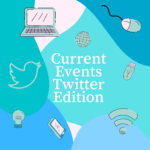What do I hope to learn from this course?
By the end of this class, I hope to gain a stronger understanding of the design principles used in creating effective multimedia for fostering meaningful learning experiences and how to integrate them into the classroom. Further, I am looking forward to expanding my list of interactive and multimedia resources available both online and through my peers.
Currently, I feel a little bit unsure about my ability in navigating digital technology and keeping up with the quick pace of the class as this is the first course that I am taking which is entirely based online. However, the fact that this class is using a largely asynchronous approach which allows for self-paced learning relieves most of my feelings of uneasiness.
Pandemic 2 – An example of interactive and/or multimedia learning?

In essence, multimedia learning is learning from words and pictures. Through the knowledge construction lens of multimedia learning, multimedia acts as a cognitive guide in assisting learners in making sense of information by building a “coherent mental representation of the presented material” (Mayer 2014).
In my brief research of the game, I learned that Pandemic 2 involves creating a disease, alongside corresponding symptoms and transmission techniques in an effort to infect and decimate the world’s population. The use of a visual interface coupled with informational text about the associated countries, symptoms and ramifications of the virus leads me to conclude that the game is a multimedia artifact.
After reflecting on the introductory chapter of The Cambridge Handbook of Multimedia Learning, I would argue that Rich’s son’s engagement with the game was an example of interactive and multimedia learning to a considerable extent.
As a result of playing this game, Rich’s son appeared to be involved with meaningful, active learning in both a behavioral and cognitive respect. By strategically selecting the type of virus, its symptoms, transmission style and starting location whilst monitoring its progress towards the game’s goal, Rich’s son was actively processing the messages presented to him and constructing a mental representation of the effectiveness of his actions throughout the game.
My Personal Experience
A particular interactive and multimedia learning experience that stood out for me occurred during my high school English literature class. As a group culminating activity, my teacher organized a Breakout EDU puzzle to assess our understanding of the unit. Similar to an escape room, Breakout EDU is a educational game kit and digital platform in which educators design puzzles for students to solve and open a locked box within a set time limit. Integrating information from lessons explored throughout the semester, my teacher created clues using a combination of significant text passages, key literary terms and associated images posted onto physical objects around the classroom as well as programmed within designated websites as short captioned videos or animations (the name of the website url was also a part of the puzzle we were trying to decode).
Working out and solving these puzzles required us students to draw connections between these texts by analyzing the clues and associated prompts, and inputting this information into specific websites/channels which would convert into the numerical data needed to open up the locks on the box.
I thoroughly enjoyed the interactive aspects of this learning experience as I was given the opportunity to collaborate with peers and ask reflective questions about the material we had studied so far. In addition, the fact that the activity was conceptualized in the format of a game and narrative story – in my case, we played the roles of writers from the Modernist Period who needed to return an important artifact – allowed me to genuinely immerse myself in the activity and learn without really realizing it.
Below is an example of a similarly formatted Breakout game for Intro to Shakespeare:
References
Common Sense Education. (2018). Breakout EDU. https://www.commonsense.org/education/website/breakout-edu
Mayer, R. (2014). Introduction to Multimedia Learning. In R. Mayer (Ed.), The Cambridge Handbook of Multimedia Learning (Cambridge Handbooks in Psychology, pp. 1-24). Cambridge: Cambridge University Press. DOI:10.1017/CBO9781139547369.002
Nouvelle ELA. (2019, June 20). Introduction to the Shakespeare breakout game/escape room preview (new version) [Video]. Youtube. https://www.youtube.com/watch?v=VrjS6A-qJHI





